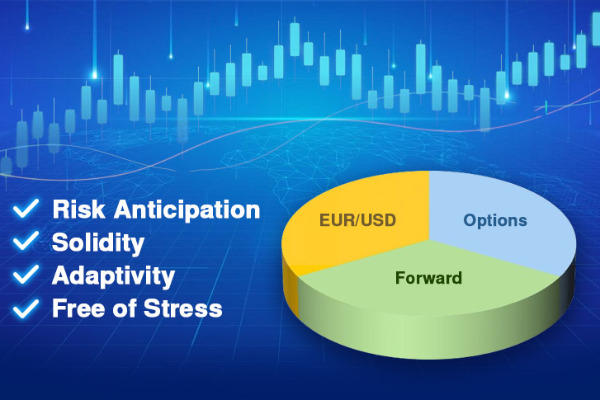A hedge fund refers to a pool of funds collected by several investors and managed by an investment management team. This type of investment is not for the weak of heart.
Hedge funds got their name from the early days when the main goal with this type of investment was hedging or minimizing risk. Nowadays, the focus with hedge funds is more so on maximizing investment instead of minimizing risk.
The best part about hedge funds is that they are used to invest in practically anything because they're way less regulated than the regular Mutual Funds.

Types of Hedge Funds
Contrary to popular belief, there are actually a few different types of hedge funds that you may be interested in. They are mainly divided by the type of asset that is being invested in and could also vary by location as well. Here are the three types of hedge funds:
Macro Hedge Fund
A macro hedge fund is the most popular type of hedge fund. They are also the most commonly available hedge funds on the market. Macro hedge funds focus their investments on stocks, bonds, and currencies.
Their strategy relies on changing macroeconomic factors such as interest rates and other monetary and economic policies. For investments related to the USD, they are usually more susceptible to the changing macroeconomic conditions around the world since the US Dollar is the most popularly traded currency worldwide.
Equity Hedge Fund
An equity hedge fund focuses its investments on stocks in the equity markets. The strategy with equity hedge funds is basically hedging the stocks against downturns in the market. This is done by selling or shorting overvalued (higher-priced) stocks with the hopes that their market rates will eventually drop.
Equity hedge funds may either include the global market as a whole with investors from all over the globe, or they may decide to focus solely on a country-specific market with investors most likely from that country as well. The latter is the most common scenario.
Relative-Value Hedge Fund
A relative-value hedge fund is among the least common types of hedge funds out there. This is probably because its strategy is quite controversial and requires a ton of work in analysis. Relative hedge funds rely on the temporary price differences or price gaps between a group of assets.
This type of fund is looking to take advantage of this temporary price difference in order to achieve a decent profit. This type of hedge fund used to be among the most popular back in the day due to the market conditions back then being more susceptible to temporary price differences.
Who Can Invest in a Hedge Fund?
You may think twice before getting too fixated on investing in a hedge fund. Although technically hedge funds are open for anyone to invest in, they're only realistically investable by people rolling in money.
This is because hedge funds require a huge investment to get in. Also, they're super high risk so you have to be okay with losing a ton of money.
Now for the average Joe like you and me, losing a ton of money is not something we look forward to. However, if you're pretty well-off, chances are losing a huge amount of money to a hedge fund won't bother you much as it won't even make a dent in your bank account.
Do Hedge Funds Have Fees?
One of the other main reasons hedge funds are not for the general public is their high fees. Although the type of fees varies with each hedge fund, most hedge funds follow the same 2-and-20 rule when charging their investors. This rule is broken down into two parts and explained below:
Management Fees
The first half of the 2-and-20 rule refers to management fees. Hedge fund managers who follow this rule get 2% of all the money invested in a hedge fund per year. This is also commonly called 2% of all the assets under management or AUM.
It may not seem like a lot, but if you consider the fact that most hedge fund investors are millionaires and billionaires who invest just as much in a hedge fund, you'll realize that hedge fund investors really be making bank.
If a hedge fund has $1 billion dollars in total investments from all the investors, they would be taking home $20 million a year. This 2% is usually controversial as most people argue that giving the managers 2% is unfair if the hedge fund ends up in a total loss.
Performance Fees
The second half of the 2-and-20 rule refers to performance fees. Hedge fund managers who follow this rule get 20% of all the yearly profits. This performance fee is meant to act as an incentive to the hedge fund managers to make them motivated to earn bigger profits.
This is because they know that if the total profits aren't that high, the 20% they get from it will also be pretty low. Therefore, performance fees are significantly important in making hedge fund managers strive for greater profits.
Risk Management in a Hedge Fund
As we've mentioned earlier, managing risk is no longer the biggest concern for hedge funds. They are more focused on maximizing their profits.
Nevertheless, a decent number of hedge funds still employ some risk management techniques or strategies in order to minimize their losses. These usually don't involve the most common trading strategy of using a stop loss.
Stop loss tends to involve taking out funds from a desirable position and may involve some pretty high transaction costs. This is why most hedge funds tend to avoid using stop losses. They prefer to use other risk management strategies like looking out for the liquidity or volatility of an asset before deciding to invest all their funds into it.
The Role of Hedge Funds in the Forex Market
In general, hedge funds are powerful financial entities that can influence the forex market. Although they do not have complete control over them, it's safe to say that hedge funds do control a significant portion of the market. In 2021, the global assets under management by hedge funds surpassed approximately 4.53 trillion U.S. dollars.
That is because hedge funds enter the forex market with huge transaction sizes and play important roles such as:
- Speculate: One of the primary roles of hedge funds in the forex market is speculation. They aim to identify mispriced currencies or anticipate market movements to exploit potential profit opportunities. Hedge funds often employ complex trading strategies, such as macroeconomic analysis, technical analysis, and algorithmic trading, to make informed trading decisions.
- Contribute to market liquidity: By executing large trades, they provide buying or selling pressure, which helps ensure sufficient counterparties facilitate transactions. This liquidity provision enhances the efficiency and smooth functioning of the forex market.
- Influence exchange rates: Hedge funds can influence exchange rates. Their substantial trading volumes can impact currency prices, particularly when their positions align with market sentiment or economic trends. Their actions can create temporary or long-lasting movements in exchange rates, making them important players in determining currency valuations.

 Dedicated FREE FOREX VPS
Dedicated FREE FOREX VPS Free FOREX Virtual Private Server
Free FOREX Virtual Private Server MT4 Demo Contest, Get $500
MT4 Demo Contest, Get $500 Sign Up for an Account, Claim 60% Deposit Bonus
Sign Up for an Account, Claim 60% Deposit Bonus Free MT4/MT5 VPS 2024
Free MT4/MT5 VPS 2024 Send E-mail and Get Free Merchandise
Send E-mail and Get Free Merchandise $1K Refer a Friend Bonus for Pepperstone Pro clients
$1K Refer a Friend Bonus for Pepperstone Pro clients Maximize Your Earnings with 100% Deposit bonus
Maximize Your Earnings with 100% Deposit bonus Trade to Win, $5,000 Monthly Demo Contest
Trade to Win, $5,000 Monthly Demo Contest Claim 30% + 15% Deposit Bonus from LiteFinance
Claim 30% + 15% Deposit Bonus from LiteFinance








